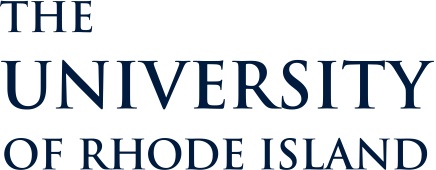Newswise — As the 36,000-ton ferry Norröna makes its weekly trip from Denmark to Iceland, it not only carries a load of up to 1,500 passengers and 800 automobiles, it will also help scientists learn about the movement of warm and cold waters into and out of the Nordic seas. It is the latest among a small group of commercial "ships of opportunity" that oceanographers are enlisting to aid in their research.
In early January, University of Rhode Island oceanographer H. Thomas Rossby, his colleague Charles Flagg at SUNY Stony Brook, and a team of electricians and engineers put a 22-inch hole in the hull of the Norröna and installed a complex instrument called an acoustic Doppler current profiler. The device measures the velocity of water moving beneath the ship " from the surface to as deep as 800 meters " by calculating the speed and direction of floating zooplankton.
"It gives us an excellent measure of the movement of the Gulf Stream, which is the main pipeline of warm water moving to higher latitudes in the North Atlantic," said Rossby. "The ocean plays a major role in the redistribution of heat on the planet, and the Gulf Stream is the main reason why Europe has a mild climate."
To better understand the variability of Gulf Stream currents, especially over long periods of time, it's necessary to take frequent measurements along the same course for many years, an effort that would be impossible using conventional research vessels, given their expense and busy schedules. But since many merchant vessels travel the same route week after week and year after year, they are ideal for collecting the necessary data.
Once it is installed on a ship, the acoustic Doppler current profiler takes measurements without requiring any human assistance. "It's a very complex instrument, but it's a totally hands-off operation. That's the beauty of it," Rossby said. "We visit the ship about once a month to check on it, but we can fetch the data any time the ship is in port just by logging in."
Due to natural variability in the oceans, the Norröna, built in 2003, will likely need to collect data for at least five years to provide Rossby with enough useful information to analyze, and even longer than that to determine long-term trends.
The URI scientist has been collecting similar information from the freighter Oleander, which travels between New Jersey and Bermuda and which Rossby equipped with the same instrumentation in 1992. The first 12 years of data collected by the Oleander demonstrated, somewhat to his surprise, that the Gulf Stream off the U.S. East Coast is quite stable and varies little. The same data also showed that cold water from the Labrador Sea moves west and exhibits significant variability.
"This kind of information is extremely valuable in studies to synthesize just what the oceans are doing," Rossby said.
Merchant vessels have been used for many years to collect sea surface temperature data and weather observations, but more complex measurements have required sending a scientific observer along, which is usually cost-prohibitive. It has only been in recent years that technological advances have made it convenient for equipment like acoustic Doppler current profilers to be placed in service on such vessels. Ships in Japan, Holland and Long Island Sound, as well as a Miami-based cruise ship and a Denmark-to-Greenland container ship, are among the vessels now collecting data for researchers.
While it requires a considerable commitment by ship owners to allow scientists to drill a hole in their vessel's hull, install complex instrumentation, and regularly monitor the equipment, Rossby emphasizes that these activities do not interfere with or make demands on the vessels' normal operation. According to the URI researcher, the Oleander has a history of public service and has been happy to cooperate with him over the last 14 years, and the Norröna " a passenger vessel " has used the collaboration as a public relations tool. A display in the ship's lobby describes the instrumentation and the research.
Rossby believes that the use of merchant vessels for oceanographic research will increase in frequency as a new generation of automatic measuring devices are developed and as scientists see the role of regular and repeat sampling made possible by commercial ships.
"You have to be stubborn, though, because this kind of work takes perseverance," he said. "The payoff doesn't come quickly. It takes a long time collecting data to get results. But repeat sampling is key to seeing long term patterns in the ocean, and working with merchant vessels is a very effective way to do it."
